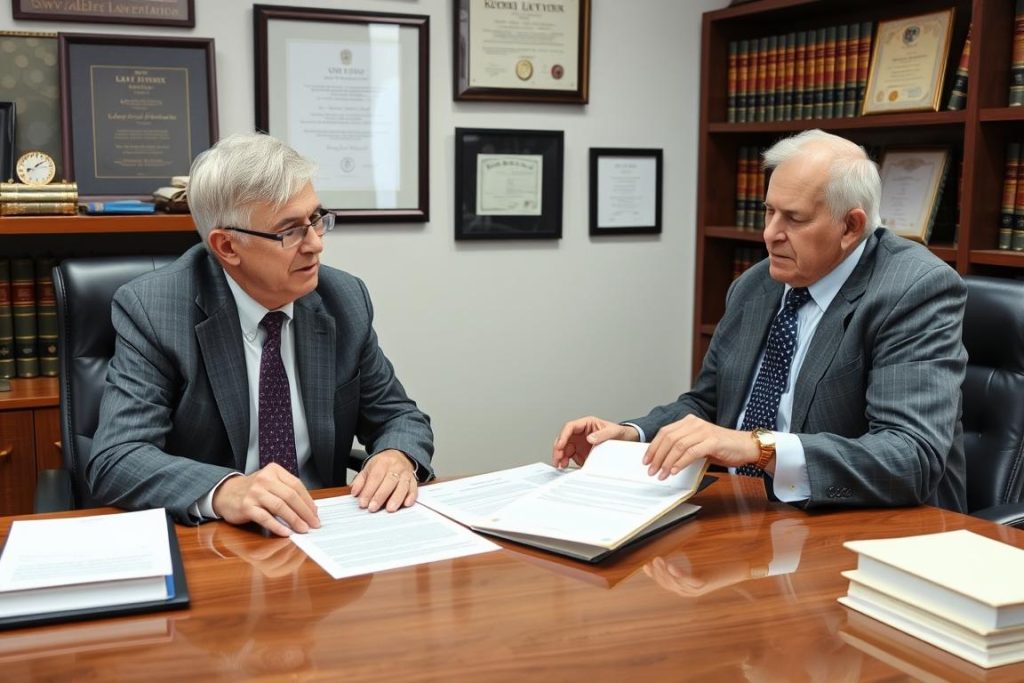- Contact Us Now: (201) 464-1011 Tap to Call
How Medicaid Can Help You Protect Assets from High Long-Term Care Costs

Planning for long-term care is a critical aspect of financial security, especially as healthcare costs continue to rise. Many Americans face the challenge of protecting their hard-earned assets while ensuring they can access necessary care through Medicaid if needed. This guide explores effective ways to protect assets from Medicaid spend-down requirements while remaining compliant with program regulations.
What Does “Protecting Assets from Medicaid” Mean?
When we talk about protecting assets from Medicaid, we’re referring to legal strategies that allow individuals to preserve their wealth while still qualifying for Medicaid benefits. These approaches help prevent the depletion of savings, investments, and property that would otherwise be consumed by long-term care expenses before Medicaid eligibility is established.
Medicaid asset protection isn’t about hiding assets or defrauding the system. Rather, it involves using legal methods to restructure ownership of assets in ways that comply with Medicaid regulations while preserving family wealth. This planning is particularly important for middle-class families who have worked hard to build modest estates but lack sufficient resources to pay for extended long-term care out of pocket.
Why Protecting Assets from Medicaid Matters
Medicaid has strict eligibility requirements, including asset limits that typically allow individuals to retain only about $2,000 in countable assets. Without proper planning, many people are forced to “spend down” their life savings on healthcare costs before qualifying for assistance.
According to recent statistics from Genworth’s Cost of Care Survey, the average annual cost of a private room in a nursing home exceeds $100,000. Even semi-private rooms average over $90,000 per year. With these staggering costs, even substantial savings can be depleted within a few years.
Beyond the financial implications, protecting assets allows families to:
- Preserve an inheritance for children and grandchildren
- Provide financial security for a healthy spouse who remains at home
- Maintain dignity and quality of life during retirement years
- Create peace of mind knowing that a lifetime of work won’t be lost to healthcare costs
Understanding the Medicaid Five-Year Look-Back Period
Before exploring specific asset protection strategies, it’s crucial to understand one of Medicaid’s most important rules: the five-year look-back period. This regulation allows Medicaid to review all financial transactions made during the five years prior to application.
If Medicaid discovers that someone transferred assets for less than fair market value during this period, it can impose a penalty period during which the applicant is ineligible for benefits. The length of the penalty depends on the value of the transferred assets and the average monthly cost of nursing home care in your state.
This look-back provision underscores the importance of early planning to protect assets from Medicaid. Ideally, you should implement asset protection strategies well before you anticipate needing long-term care. However, even if you’re facing an immediate need, there are still legal options available to protect at least a portion of your assets.
4 Key Ways to Protect Assets from Medicaid
There are several effective strategies for protecting assets while maintaining Medicaid eligibility. The best approach depends on your specific financial situation, family circumstances, and the laws in your state.

1. Medicaid Asset Protection Trusts (MAPTs)
A MAPT is one of the most effective ways to protect assets from Medicaid while maintaining some benefits of ownership. Irrevocable trusts are among the most powerful tools for Medicaid planning. A properly structured Medicaid Asset Protection Trust allows you to transfer assets out of your name while still benefiting from them indirectly.
With an irrevocable trust, you transfer legal ownership of your assets to the trust, which is managed by a trustee you designate. Since you no longer own the assets directly, they won’t count toward Medicaid’s asset limit after the five-year look-back period has passed.
Key features of Medicaid Asset Protection Trusts include:
- Assets in the trust are protected from Medicaid spend-down requirements
- You can receive income from the trust (though this may affect Medicaid eligibility)
- Your home can be placed in the trust while you retain the right to live there
- Assets avoid probate and pass to beneficiaries according to your wishes
2. Spousal Protection Strategies
Medicaid has special provisions to prevent the impoverishment of a healthy spouse (called the “community spouse”) when their partner requires long-term care. These provisions allow you to strengthen your strategy to protect assets from Medicaid spend-down rules.
The Community Spouse Resource Allowance (CSRA) permits the healthy spouse to keep a certain amount of the couple’s joint assets without affecting the eligibility of the spouse needing care. The specific amount varies by state but can be substantial.
Additionally, the Monthly Maintenance Needs Allowance (MMNA) allows the community spouse to receive income from the institutionalized spouse to ensure they have adequate monthly support.
3. Medicaid-Compliant Annuities
A Medicaid-compliant annuity is a financial product that converts a lump sum of money into a stream of income. When properly structured, these annuities can help individuals qualify for Medicaid while protecting assets from Medicaid spend-down requirements.
To be Medicaid-compliant, an annuity must:
- Be irrevocable and non-transferable
- Provide payments in equal amounts (no balloon payments)
- Have a term no longer than the owner’s life expectancy
- Name the state Medicaid agency as the remainder beneficiary for at least the amount of Medicaid benefits received
This strategy can be particularly effective in crisis planning situations when someone needs immediate long-term care and hasn’t had time to implement other strategies.
4. Exempt Asset Transfers
Not all assets count toward Medicaid’s eligibility limits. Understanding which assets are exempt can help you restructure your finances to qualify for benefits while preserving wealth.
Common exempt assets include:
- Your primary residence (up to certain equity limits, which vary by state)
- One vehicle
- Personal belongings and household goods
- Certain prepaid funeral and burial arrangements
- Life insurance policies with limited cash value
Converting countable assets into exempt assets can be an effective strategy, but you must do it carefully to avoid penalties. For example, using excess cash to make home improvements or pay off mortgage debt might be appropriate since your home is generally an exempt asset.
The Importance of Early Planning
The most effective Medicaid planning to protect assets from Medicaid begins well before you need long-term care. Starting early provides several advantages:
- More strategies are available when you plan ahead
- You can navigate the five-year look-back period more effectively
- You can structure asset transfers properly to avoid penalties
- Family members have time to understand and participate in the plan
However, even if you’re facing an immediate need for long-term care, don’t assume it’s too late. Crisis planning options exist that can help protect at least a portion of your assets. These strategies are more limited but can still provide significant benefits compared to doing nothing.
According to Medicaid’s official website, proper planning can help ensure you receive the care you need while preserving as much of your financial legacy as possible. The key is working with professionals who understand both Medicaid regulations and asset protection strategies.
Working with an Elder Law Attorney
Medicaid planning is complex and varies significantly from state to state. Working with an experienced elder law attorney is essential to developing a strategy that works for your specific situation.

An elder law attorney can:
- Evaluate your specific financial situation and goals
- Explain how your state’s Medicaid rules apply to your case
- Develop a customized asset protection plan
- Draft necessary legal documents, including trusts and powers of attorney
- Help with Medicaid application and appeals if needed
When selecting an attorney, look for someone who specializes in elder law and Medicaid planning specifically, not just general estate planning. This specialized knowledge is crucial for developing effective strategies that comply with current regulations.
Common Mistakes to Avoid When Protecting Assets
When implementing asset protection strategies, be aware of these common pitfalls:
- Giving away assets without proper documentation – Informal transfers can be difficult to verify and may trigger penalties
- Using the wrong type of trust – Revocable living trusts don’t protect assets from Medicaid
- Waiting until a health crisis – Last-minute planning severely limits your options
- Hiding assets or income – This constitutes fraud and can result in severe penalties
- Failing to consider tax implications – Some strategies may have unexpected tax consequences
- Not updating your plan – Medicaid rules change, and your plan should be reviewed regularly
Working with knowledgeable professionals can help you avoid these mistakes and develop a sound strategy that protects your assets while ensuring you receive the care you need.
Conclusion
Protecting assets from Medicaid spend-down requirements is a legitimate planning goal that can help preserve your financial legacy while ensuring access to necessary long-term care. With proper planning and professional guidance, you can navigate Medicaid’s complex rules and develop strategies that work for your specific situation.
Remember that the most effective planning begins early, but options exist even for those facing immediate long-term care needs. The key is to work with experienced professionals who understand both Medicaid regulations and asset protection strategies.
By taking proactive steps now, you can ensure that your hard-earned assets benefit you and your loved ones instead of allowing long-term care costs to drain them. This planning provides not just financial benefits but also peace of mind knowing that you’ve taken steps to protect your legacy while securing access to necessary care. For more inquiries related to New Jersey and New York Medicaid legal strategy, please feel free to contact The Chamberlain Law Firm by clicking here or calling us at (201) 464-1011.
This article is for general legal information only. It is not legal advice to rely on for your specific fact pattern. No opinion expressed above can be used to avoid tax penalties that may be imposed otherwise on the reader, nor to promote or market to any other person any transaction or matter addressed herein. Advice to rely on can be gotten only after a thorough discussion and investigation of the facts of your situation with counsel licensed in your state. No attorney-client relationship has been established by this communication.

